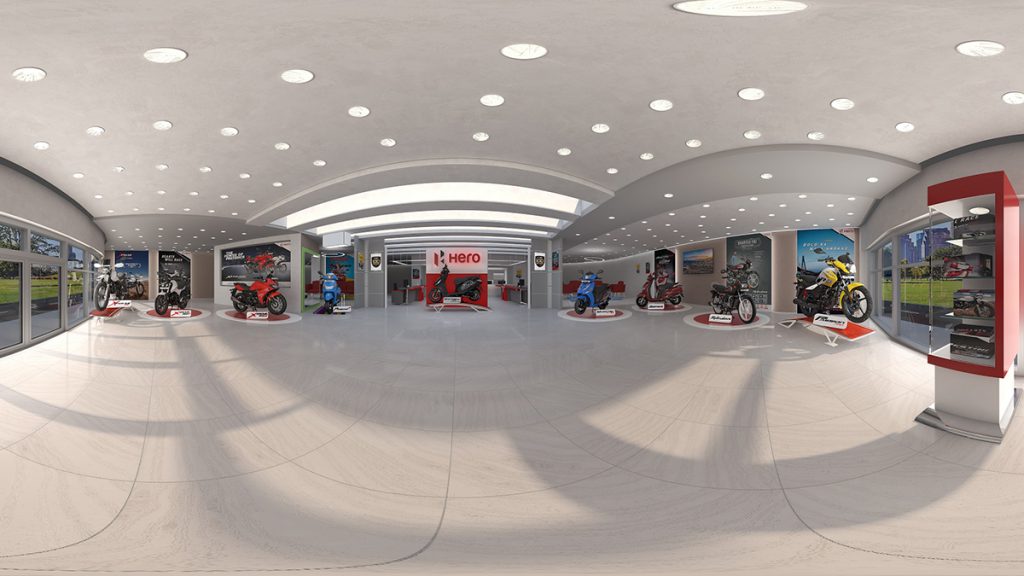Hero Motocorp is a name that every one of us knows. Some of us even know the brand as the OG Hero Honda since most of us had/has a “hero” or “hero Honda” bike in our homes. After all, it is India’s largest two-wheeler brand as well as one of the first in the market, known for providing affordable and fuel-efficient motorbikes. The company has a long history and faced lots of huddles and bumps along the journey. Let’s take a look at the past of this people’s brand.

History of Hero Motocorp: A timeline
Hero Origin: Non-Motor Bikes
Before motorcycles, Hero Cycles was established in 1956 in Ludhiana, Punjab by the Munjal brothers. Soon after its foundation, the brand became the largest cycle manufacturer in the country (Hero is that one consistent topper in school). This top position helped the brand get under the radar of other international companies. One such brand is Honda which in 1983 collaborated with Hero. It was like the best of Japan shook hands with the best of India. In 1984, a new alliance called “Hero Honda” was born.
Real Journey of Hero Motocorp Begins: Hero Honda
Hero Honda, together, manufactured some of the most iconic bikes in the Indian market, which are still running on the roads. One such motorcycle was the CD100, a 4-stroke motorcycle which was the 1st product of this joint venture in India. This bike was capable had a 97cc 4-stroke engine and was known for its low maintenance, affordability and high fuel efficiency.
Hero Honda was in fact the 1st brand to introduce 4-stroke bikes in the country. The CD100 was a good balance between mileage, price and build, thus the brand set a benchmark for other bikemakers. But this didn’t stop the R&D of the brand and Hero Honda continued creating buzz with many more bikes till 2000.
Hero Honda knew about the increasing number of youth buyers and thus came up with the Sleek in 1984, which was their second product. The sleek was really sleek in terms of looks and light weight of just over 100 kilos.
From the 1900s, the company became popular with every age group with some of the most iconic motorcycles. These bikes were all reliable, fuel-efficient and came with good built quality.
In 1991 Hero Honda came with the upgraded CD100SS, but in 1994, the brand launched perhaps the most iconic bike in the Indian market, Splendor (or Lord Splendor). The splendor is a simple 97cc commuter with a boxy design and lightweight body. It’s famous for its high fuel efficiency, reliability and low maintenance. The Splendor is still in production and has retained the same design since its launch.
Until now, Hero Honda has been seen as a brand that only offers affordable commuters, but it all changed when the brand launched the CBZ. This bike carried the soul of the iconic CBR in a more commuter-centric body, capable of reaching 100km/hr. 2001, also saw the launch of 2 new bikes: Hero Honda Joy and the iconic Passion.
Hero Honda made history again with its first high-capacity tourer motorbike in 2003, the Karizma. The bike was fast and capable of reaching 130 km/hr, making it one of the fastest during its heyday. The brand also launched the Ambition 135 to target premium commuter buyers, but it failed to gain hype.
2005 to 2009 saw some powerhouses from Hero Honda like the Super Splendor, Splendor NXG, Hunk and the all-new, more powerful Karizma ZMR.
All good things come to an end, and so did Hero Honda. The two brands joined hands and gave their all and made their mark in the Indian automobile history. Despite their strong partnership for more than 10 years, Honda was still hesitant to share the full technology in their motorcycles. Also, Hero had to pay a high royalty to “Honda”, however, the reason was the restriction Honda put in exporting their bikes to just a few countries such as Bangladesh and Nepal. Since Exporting was one of the keys that could help Hero expand its global footprint and hence both brands bid farewell.
Hero Motocorp Reborn
After the division, Hero Honda changed to Hero MotoCorp in 2011 and got a new logo which is still in use. But building a separate brand identity is difficult and it is harder when you are in one of the world’s most successful collaborations.
With doubts lingering about the end of this joint venture, Hero broke the silence with the Impulse as its first product. The bike was ahead of its time and didn’t sell well, although years later the Xpulse became a huge success.
The brand produced new engines in-house such as the 110cc and 125cc units which were incorporated in many of their bikes with the I3s tech. The I3s tech was first introduced in the iSmart, which holds the record of putting out the highest ever fuel economy in India of 110 km/l. On the other hand, Glomaur was the first Hero model to introduce Fuel injection technology.
Hero also reintroduced the iconic Karizma as the Karizma XMR which has a 210cc engine and is one of the most powerful in its segment. The brand is also in a collaboration with Harley Davidson and launched the Mavick 440 which is the first 400cc bike from the brand alongside the Xtreme 125R which has one of the best designs in its segment.
Currently, Hero MotoCorp headed by Niranjan Gupta as the CEO is the largest two-wheeler manufacturer in India with Splendor as the highest-selling model and one of the largest in the world with a presence in more than 47+ countries and 9000+ customer touchpoints worldwide (More than 1780+ in India).

